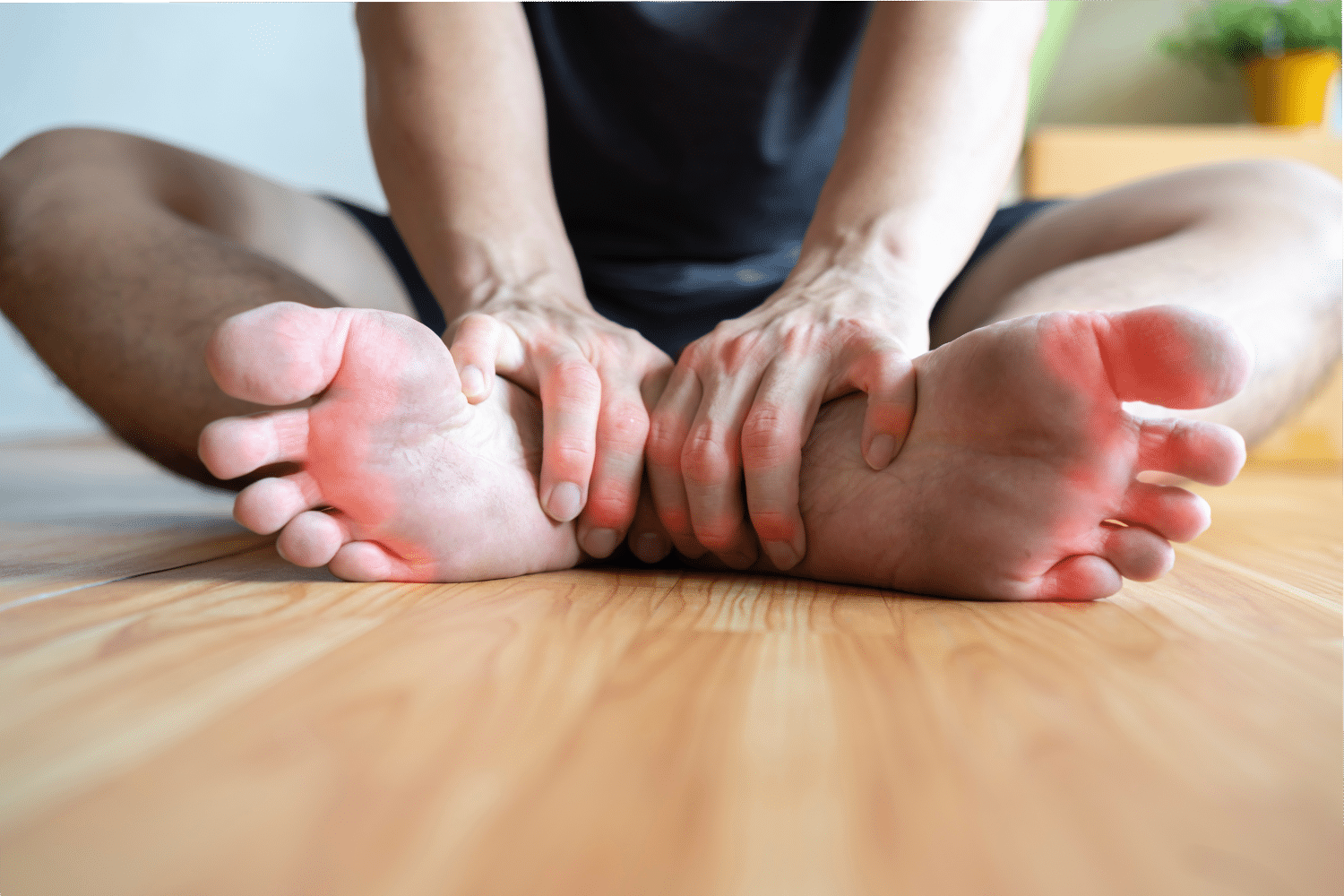What Causes Arthritis Flare-Ups? How Can You Anticipate Them?
|
| Arthritis flare-ups can feel like severe pain that takes over and fully disrupts your daily routine. The discomfort can be intense and may throw a wrench in your plans and activities. |
If you have a diagnosed arthritis condition, the scenario above might hit close to home. Living with arthritis can be agonizing and painful, especially if you aren’t sure what the cause of your flare-ups is.
Is there a way to figure out what triggers arthritis flare-ups? What steps can you take to deal with the flare-ups when they arrive? Let’s take a look at some common forms of arthritis and try to answer these questions:
What Is Arthritis?

Any condition that includes the suffix -itis is an inflammatory condition. Specifically, arthritis refers to inflammation in the body’s joints. There are many types of arthritis, but they typically cause pain in one or more joints, often in the neck, back, shoulders, hips, knees, ankles, wrists, fingers, or toes.
There are many different causes for arthritis, with genetic factors, age, wear-and-tear on joints, autoimmune issues, and infection all playing a possible role.
What Causes Arthritis Flare-Ups?
While arthritis flare-ups may seem to come out of nowhere, they can also be triggered by certain factors. For example, stress, repetitive movements, overexertion, and cold weather can exacerbate arthritis.
However, the exact causes of your flare-ups can also depend on the exact form of arthritis you’re dealing with — different types of arthritis can be worsened or triggered by different factors.
Osteoarthritis
Osteoarthritis is the most commonly diagnosed form of arthritis. It tends to affect those who are older (usually 50 and above) and causes inflammation in joints to build slowly over time. It can affect more than one joint, but often it’s felt in a particular joint that’s been injured or experienced strain.
Activities like running, playing sports, hiking, typing, doing work outdoors, or any other repetitive physical activity can cause osteoarthritis to set in. Affected joints will be swollen and tender, but you might also experience strange scraping, crackling, or rubbing sensations.
Painful flare-ups from osteoarthritis are typically the result of overusing a joint. If you have osteoarthritis in your ankle and go hiking on an intense hiking trail for the whole day, then you’re likely to experience a flare-up. What makes osteoarthritis flare-ups easier to deal with than other forms of arthritis is that you can generally plan for them with ice, medication, activity modification, and rest.
Rheumatoid Arthritis (RA)
Unlike osteoarthritis, RA is an autoimmune disease where the body’s immune system attacks the inner lining of the joints, causing painful swelling and inflammation. Over time, RA can break down and erode joints so they no longer work properly. Also, unlike osteoarthritis, RA generally affects joints on both sides of the body — so if you get RA in one knee, you’re likely to also get it in the other. Women are generally much more likely to develop RA, and there’s a higher risk if you’re older.
Flare-ups from RA can come from overuse or injury to the affected joints, but more general causes can also bring them on. Stress can be enough to bring on a flare-up, as can infections, viral illness, or not getting enough sleep.
Unfortunately, if you have RA, you might also occasionally experience unpredictable flare-ups that don’t have a clear cause.
Psoriatic Arthritis
Psoriasis is a painful disease that causes inflammation in the skin. A dry, itchy, painful rash can break out anywhere on the body. If you already have psoriasis, you may also have a higher chance of developing psoriatic arthritis, which causes painful inflammation in the joints — especially in the fingers and toes.
Flare-ups from psoriatic arthritis and rheumatoid arthritis often have similar causes. Stress, illness, overuse of joints, smoking, and certain medications can trigger psoriatic arthritis pain.
Gout
A buildup of uric acid in the joints causes gout, a form of arthritis that’s usually characterized by intense flare-ups of pain, most often in the big toe. Gout is usually caused by eating too much food that’s high in purines, a chemical that the body converts to uric acid.
Foods that are high in fructose (like fruit juices), red meat, and alcohol can all be potential triggers for flare-ups. Medications, getting too dehydrated, or having other health problems can also aggravate gout.
How Can You Manage Arthritis Flare-Ups?

Because you can’t always avoid arthritis flare-ups, it’s super important to be prepared for them when they do come. How can you be ready for a painful flare-up?
Here are some easy ways to get fast relief from flare-ups so that you aren’t completely debilitated:
-
Ice: Having an ice pack ready to go in your freezer is a great way to stay prepared for pain, especially for arthritis conditions like gout that can flare up out of nowhere.
-
Heat: Sometimes, arthritis pain responds better to relaxing heat than to numbing cold. Using a heating pad or taking a warm bath can help relax away flare-ups when they arrive.
-
Medications: NSAIDs (non-steroidal anti-inflammatory drugs) such as ibuprofen and pain medication like acetaminophen can treat mild to moderate flare-ups. If your pain is more severe, you can talk to your healthcare provider about prescription pain medication, muscle relaxers, or nerve pain medication, all of which are used to treat arthritis pain.
-
Exercises: While you don’t want to aggravate your pain, doing exercises to strengthen the tendons and ligaments around your joints can make flare-ups less painful. Talking to a physical therapist is a great way to learn helpful exercises that won't cause more damage.
-
Topicals: Often, using a cream, balm, lotion, or oil to rub onto an area where a flare-up is occurring is a good way to get rapid relief. Some topicals contain medications like NSAIDs or lidocaine to reduce or numb inflammatory pain, while others use herbs or plants to soothe and relax the part of the body experiencing a flare-up.
Can You Prevent Arthritis Flare-Ups?
Whether flare-ups can be prevented depends on what type of arthritis you’re experiencing and how far it’s progressed. Especially for autoimmune forms of arthritis (like RA), there may not be a way to completely prevent painful flare-ups.
However, there are some general ways to avoid or lessen the number of flare-ups:
-
Don’t overdo it: When you exercise or are doing physical activity, be careful not to aggravate areas of your body that are prone to arthritis flare-ups. If you experience pain following certain physical activity, then modify the activity or do something else.
-
Manage stress: Few things are more triggering for flare-ups than stress. If you feel like the walls are closing in, take a deep breath, try to declutter your mind, and do whatever you need to do to prioritize your mental/emotional health. Your mind can have a profound effect on your body.
-
Avoid bad habits: Smoking and excessive alcohol are triggers for most forms of arthritis and arthritis-like conditions. If you haven’t quit smoking, consider doing so. If you frequently drink too much alcohol, try to cut back.
-
Be careful what you eat: Certain foods can aggravate arthritis flare-ups, especially food that’s high in fatty acids like dairy and meat products. If certain foods seem to cause flare-ups, try to avoid them and consider an anti-inflammatory diet.
-
Get enough rest: Making sure that you get enough rest each night is very important to preventing the number and severity of arthritis flare-ups because your body heals, recharges, and rejuvenates while you sleep.
Remaining Ready
Whatever the type or cause of your arthritis pain, being prepared for flare-ups is very important to remain mobile and active, even in the midst of pain. Talk to your healthcare provider about how to best approach preparing and dealing with your arthritis flare-ups.
Sources:
What Is Arthritis? | Arthritis Foundation
Does stress affect the joints? Daily stressors, stress vulnerability, immune and HPA axis activity, and short-term disease and symptom fluctuations in rheumatoid arthritis | NCBI
Managing Rheumatoid Arthritis with Dietary Interventions | PMC




































